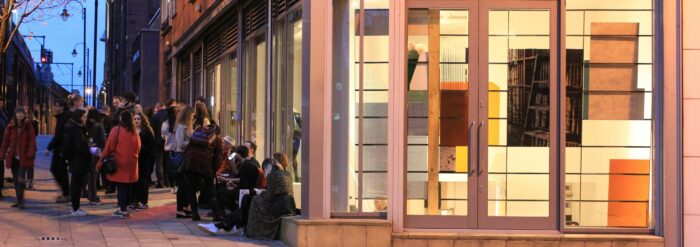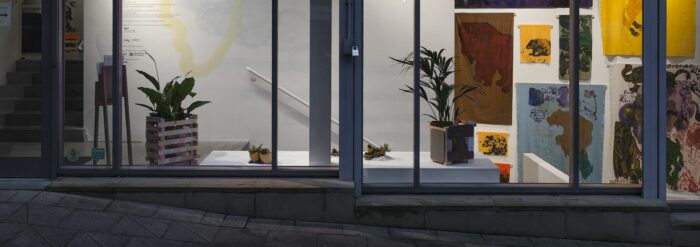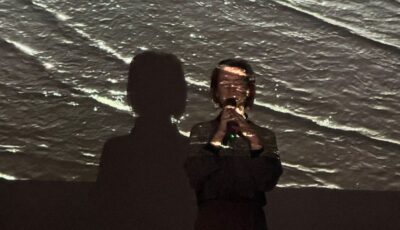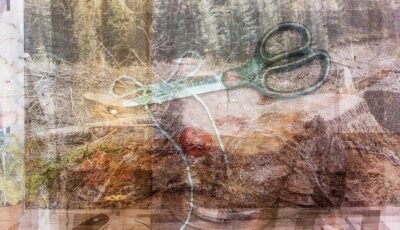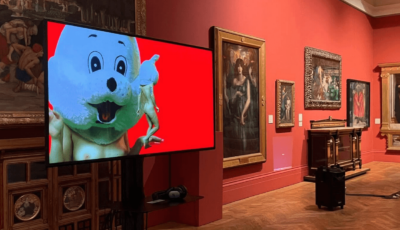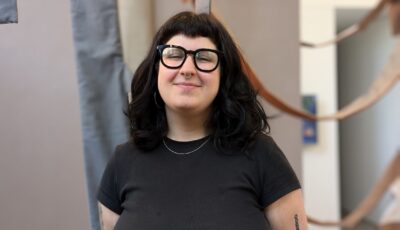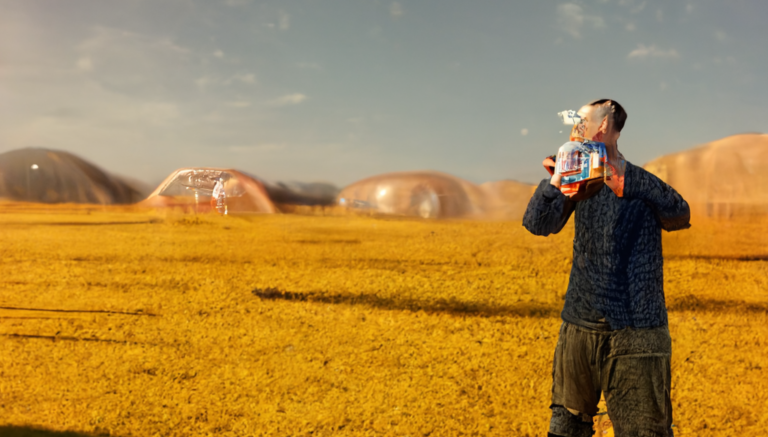
Spotlight: Artists and Sustainability – Heidi Nikolaisen
Posted on 24 July 2022
This month we’ve invited artist Heidi Nikolaisen to contribute to our ongoing series Spotlight – Artists and Sustainability, where we ask artists to share short responses about their work and how it might relate to climate change. Based in Denmark, Heidi is part of SUSTAIN, our two-year programme of professional development and artist exchange focussed on developing low carbon and ecologically aware ways of producing and experiencing art. SUSTAIN is a partnership project between Castlefield Gallery and Aarhus Center for Visual Art and Heidi has just returned to Denmark after a 2-month ‘Slow Culture Residency’, making use of only slow and low carbon travel to travel between Aarhus and Manchester.
In what ways do you feel your work might relate to issues of climate change and sustainability, in the content of the work, its narrative, conceptually or theoretically.?How might it speak to or challenge public discourse?
My practice has been in and will continue to be for a longer period, in a transition. For the last year or so, also encouraged by the SUSTAIN programme, I have gradually been moving towards thinking about and working more sustainably. Actually, I also want to add that I think sustainability is not enough. To me sustaining implies a consent to a ‘status quo’. It is not enough that something sustains, for me the word is thrive. Not in a neoliberal and growth sense of the word. I do not wish to sustain anything about the current value system that has been the cause of so much detrimental damage, especially in lieu of western capitalist and colonialist world-making. Instead we should aim for the Earth to thrive; thrivability. That doesn’t mean no sacrifices and no changes of habits, but I don’t think it has to exclude thriving – actually it most likely will be the opposite.
I’ve found that there is quite a different joy for me in working with organic materials. Whilst on the SUSTAIN residency in Manchester I have re-discovered the practice of foraging. It is something I think a lot of us do as kids, but then forget that there exists this amazing joy in spending time looking at, touching and just sensing the landscape, trees, plants, flowers etc. Lately I’ve allowed myself to return to this; looking at such things as nettles, grass and flower petals. On the other hand, a lot of my work has some kind of proximity to the digital. So, it is a challenge for me on a personal and moral level, to think about how these two spheres exist in my work and speak to climate issues. I don’t want to neglect all the discrepancies and intensities that exist today, so how do I find a way to talk about what I sometimes feel like a rift – everything that is going on with the web3 craze, digital currencies, and then on the other hand wanting to maintain a low impact way of producing.
Digital and technology is one thing I think is important not to leave it out of the discussion, however much there seems to be a division about that in the art world. The French thinker Gilbert Simondon had a special harmony to technology which I have been inspired by. He saw machines, technical objects and processes much more as phenomenological entities, meaning objects that we need to recognise as having a physical presence and valence to our sensations and experiences. Much like if we compare it to what happens when we go foraging. To have this kind of intimate relationship to our technologies is important, because that means we will be able to protect, care for and develop more Earth-friendly technologies.
With regards the materials, processes and techniques you use to produce your work, are there any practical decisions you make with regards climate change and sustainability?
For my own mental health and ability to work I have made a strong commitment in the last year to meditate more. Every day, ideally for two hours, once in the morning and again in the evening. That is helping me a lot to reduce stress and anxiety.
Another thing I have spent a lot of time pondering is what it means to me to have a ‘non-extractive relationship’ to art making. How do I make sure that my work and my practice does not rely on extractive methods? That is going to be a continuous debate. For now, I have concluded that extractive systems are everywhere, and that it’s important to know for yourself how to recognise and avoid them. This is where the ability of tuning into your own perceptions and body becomes important.
This will result in some principles to work to – like, saying no to transporting pieces could be one thing, for myself only choosing to exhibit in Denmark could be another, not attending art events could be a third. Choosing to simplify processes, and accept shifts in aesthetics because the material alternative could be too carbon heavy etc. We don’t have to repeat the same faulty patterns that we have gotten used to. Artists like anybody else I think can become robots, fulfilling their duties of producing and getting into habits where you do not question your methods. It is important to value the fact that doing things differently will most of the time be much more inspiring.
Next, I have started using carbon tracking much more – also for putting my work online (in relation to that I’ve recently developed a low-carbon artists’ website guide with artist Sophy King, which you can find at Castlefield Gallery). To be honest, right now it is so unnatural that it is tiresome. But eventually it will become easier and more integrated in the way I work. Also, decisions like choosing not to fly, choosing to use foraged and found materials or thinking about the durability and life-cycle of the materials I work with. I have also decided not to work with big manufacturers. This is something that will have a significant impact on my work because it means that I have to think in scales that I can manage myself. On the other hand, it means that I have more control of the choices and processes and have less compromises to make. I have found that making these decisions has been some sort of relief.
In general, how do you feel galleries, art spaces, artworks and artists, might be able to contribute, what if any role do you feel they can play in a progressive conversation?
Generally, I feel like irresponsibility is in correlation to the capitalist society we are unfortunately a part of. So, any attempt from the institutions to dismantle that could be great. I literally will come across a hole in the street that shouldn’t be there and wonder why that has not been tended to. The world is so full of unmaintained, deteriorating, dilapidated things and places it is becoming evident that we are massively overproducing and just how reckless the human race is in terms of not following through. So, for me even the small decisions matter, from the dishwasher soap to the napkins, to the beers or drinks that are served at vernissages. My advice is the same for everyone: choose local, organic products. Something I see time and time again when things become institutional, the personal values get thrown out the window and that sustainability is not budgeted for.
Generally, I think it’s just about factoring it in. Galleries and museums could probably also have stronger sustainability policies in general, like having formulated guidelines about accommodation, travel, transport etc. and hold partners accountable for that. They just need to be more green ballsy really.
Are there any tips or advice, anything you have learnt you might want to share with other artists or our audiences?
I think I’d just advise artists as well as audience to think holistically about their whereabouts and practice and don’t be afraid to say no to things and do things differently. When applying for funding think about sustainability from the beginning and don’t be afraid to ask for more if getting the most sustainability requires it. Make a list of what it means for you to be sustainable – and think about how you can best fulfil those, even if it means making some radical decisions. I promise you will be happy about them.
Also ask more questions! Ask questions about the production of a material, where does it come from, who transports it, what is the exact production method etc. ask the companies and manufacturers if you work with any. Likely they will also be interested in ways to become more aware, and if they don’t offer any solutions consider simply not working with them.
For artists or others who might be interested in foraging I’d recommend checking out on Alicefoxartist, Foragedfibres, Delia_of_the_greenwood on Instagram, and from another perspective on ‘personal’ sustainability thenapministry and Red School.
Reading at the moment:
All Art is Ecological, Timothy Morton
How to Blow Up a Pipeline, Andreas Malm
Carbon Detox, George Marshall
Baskets, Tabara N’Diaye
The Democracy of Species, Robin Wall-Kimmerer
Find out more about the SUSTAIN programme and the other artists involved at castlefieldgallery.co.uk/news/sustain
